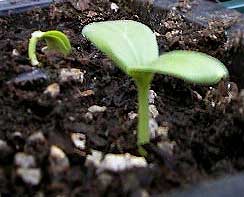In February, a gardener’s fancy turns to starting seeds under lights: cabbages that can be transplanted into the garden in early spring; the earliest annuals, such as violas and snapdragons; and those that take a really long time, like petunias.
 Even if you have a greenhouse, you’ll need a light setup to give most plants a head start indoors. Your baby plants need 14 to 16 hours of light every day, certainly not what is being supplied by sunlight this time of year.
Even if you have a greenhouse, you’ll need a light setup to give most plants a head start indoors. Your baby plants need 14 to 16 hours of light every day, certainly not what is being supplied by sunlight this time of year.
Timing your seed-starting is always tricky, because the weather is so fickle. You can control the conditions indoors, but eventually your babies will have to go outside, and the weather out there just refuses to be consistent and predictable.
In February, you can’t possibly know if it’s going to be a long, cool, wet spring, or an early, warm, dry spring, or a spring with an early warm spell followed by a bone-breaking freeze.
So what do you do? You play the odds, and you hedge your bets. You look up the average last frost date in your area and use the seed packet information to count back from that date. You take into consideration the characteristics of each vegetable: Can it tolerate a light freeze, like kale or spinach or radishes? Is it a subtropical plant that will likely just rot out if you plant it too soon, like tomatoes and peppers?
You make all your calculations and pick an ideal seed starting date, you plant your seeds, you nurture your seedlings for 10 weeks or six weeks or four weeks or whatever they need, and you hope the weather doesn’t do anything too terribly un-average this spring.
To hedge your bet, plant another batch of seeds a week after your ideal date. That way, if it’s extra cold in April or May, you’ll have some seedlings that can wait a week or two.
extra cold in April or May, you’ll have some seedlings that can wait a week or two.
Give your seeds some warmth to encourage them to germinate. You can find the optimum germination temperatures for many vegetables in a chart in this web page from the University of Colorado Extension. (Also Read Roger Marshall’s blog from last month regarding heating mats in the greenhouse)
Once you start to see tiny green sprouts, move the seedlings under lights, and use a timer to keep them lit 16 hours a day. Rotate the seedlings as necessary to keep them from stretching toward the light. Water them from the bottom to reduce the risk of fungus diseases.
Seed timing is one of the topics I go into in my new book, Illinois, Indiana & Ohio Month-by-Month Gardening: What to Do Each Month to Have a Beautiful Garden All Year (Cool Springs Press). Take a look!


